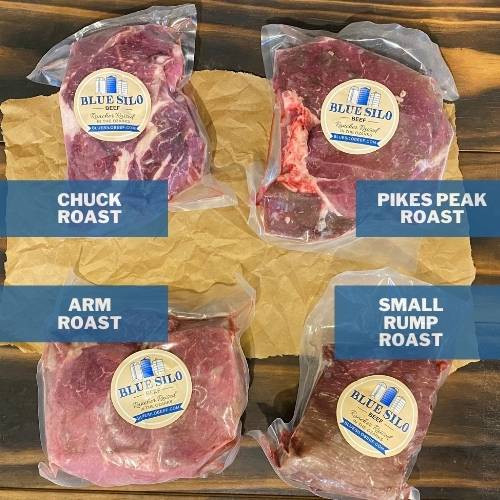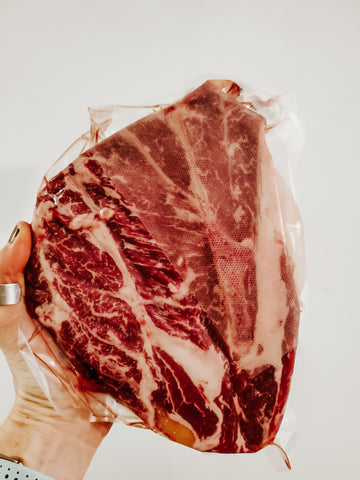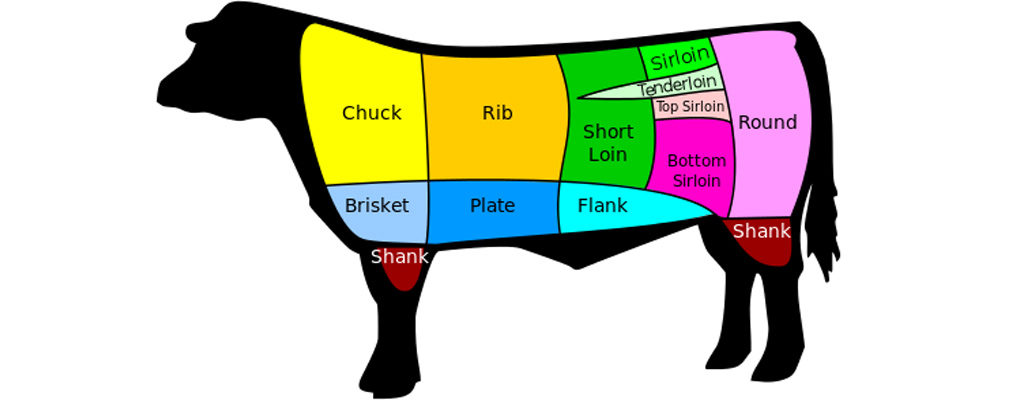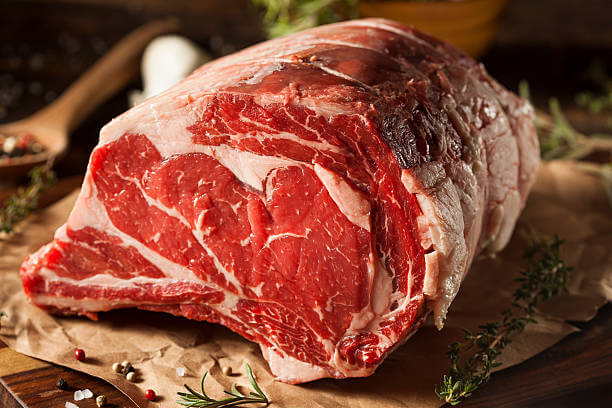Introduction

Understanding the different cuts of beef is essential for achieving the best results when roasting. Two popular cuts often used for roasting are the arm roast and chuck roast. These cuts come from the shoulder area of the cow and offer distinct flavors and textures. Arm roast is known for its tenderness and lean profile, while chuck roast has more tough tissue and requires longer cooking times to become tender. In this article, we will explore the characteristics, cooking methods, flavor profiles, and textures of both arm roast and chuck roast to help you choose the perfect roast for your cooking needs.
Importance Of Understanding Beef Cuts For Roasting
Understanding the different cuts of beef is crucial for achieving the perfect roast. Each cut has unique characteristics that affect the flavor, tenderness, and cooking time. By understanding the differences between cuts like arm roast and chuck roast, you can select the best cut for your desired outcome. This knowledge allows you to make informed decisions when shopping for meat and ensures that you choose the right cooking method to enhance the natural flavors and textures of the cut you are working with. Whether you want a tender and lean roast or a hearty and flavorful one, understanding beef cuts will help you achieve the desired results.
Overview Of The Arm Roast And Chuck Roast Cuts
The arm roast and chuck roast are both cuts of beef that come from the shoulder area of the cow.
The arm roast, also known as the round bone roast, is a leaner and more tender cut compared to the chuck roast. It is typically oval-shaped and contains a round bone in the center. This cut is known for its versatility and is often used for pot roasts or slow cooking methods.
On the other hand, the chuck roast comes from the shoulder and neck area of the cow. It has more fat and connective tissue, which gives it a rich and flavorful taste. This cut is often marbled and has more muscle, making it ideal for braising or roasting.
Both cuts have their own unique characteristics, and understanding these differences can help you choose the right cut for your cooking needs.
Arm Roast

The arm roast, also known as the round bone roast, is a leaner and more tender cut compared to the chuck roast. It is typically oval-shaped and contains a round bone in the center. This cut is known for its versatility and is often used for pot roasts or slow cooking methods. The arm roast has less fat and fewer calories, making it a healthier option. With its tenderness and flavorful taste, the arm roast is a great choice for those who prefer a leaner cut of beef.
Arm Roast Characteristics And Appearance
The arm roast is characterized by its oval-shaped structure and contains a round bone in the center, giving it a distinctive appearance. This cut of beef is leaner and more tender compared to the chuck roast. It has less fat and fewer calories, making it a healthier option for those conscious of their dietary intake. The arm roast’s tenderness and flavorful taste make it a versatile choice for a variety of cooking methods, such as pot roasts or slow cooking. Its appearance and tenderness contribute to its appeal as a delicious and nutritious option for beef enthusiasts.
Best Cooking Methods For Arm Roast
There are several cooking methods that work well for arm roast. Here are some of the best ways to prepare this cut of meat:
- Slow cooking: Arm roast is perfect for slow cooking methods like braising or stewing. The low and slow cooking technique helps tenderize the meat and enhances its natural flavors.
- Pot roast: This classic method involves searing the roast on all sides and then cooking it in a covered pot with liquid and vegetables. The moist heat and long cooking time result in a tender and flavorful roast.
- Roasting: Arm roast can also be roasted in the oven. Season the roast with spices and herbs, and then cook it at a lower temperature to retain its moisture and tenderness.
Whatever method you choose, make sure to use a meat thermometer to ensure the roast is cooked to your desired level of doneness.
Chuck Roast

Chuck roast is a flavorful and versatile cut of beef that comes from the cow’s shoulder area. It is known for its rich marbling, which adds moisture and tenderness to the meat. This cut is slightly more fatty than arm roast, which results in a juicy and tender texture when cooked properly. Chuck roast is commonly used for pot roasts, stews, and braising, as the slow and moist cooking methods help break down the tough fibers and create a delicious, melt-in-your-mouth result. It is a popular choice for comfort food dishes and is beloved for its robust flavor.
Chuck Roast Characteristics And Appearance
Chuck roast is a cut of beef that is known for its rich marbling and robust flavor. It comes from the shoulder area of the cow and has a rectangular or oblong shape with visible layers of fat throughout the meat. The marbling within the muscle fibers adds moisture and tenderness to the roast when cooked. It has a reddish-brown color and a firm texture. The chuck roast is slightly more fatty compared to the arm roast, which contributes to its juicy and succulent nature when prepared properly.
Best Cooking Methods For Chuck Roast
Chuck roast can be cooked using several methods to achieve tender and flavorful results. Here are some of the best cooking methods for chuck roast:
- Slow Cooking: Chuck roast is ideal for slow cooking methods such as braising or stewing. Slow cooking allows the tough connective tissues in the meat to break down, resulting in a tender and juicy roast.
- Roasting: Chuck roast can also be roasted in the oven at a low temperature. This method helps to retain the moisture and flavor of the meat.
- Pot Roasting: Pot roasting involves cooking the chuck roast in a covered pot or Dutch oven with liquid and vegetables. This method helps to infuse the meat with flavors and keeps it moist.
- Pressure Cooking: Using a pressure cooker can significantly reduce the cooking time for chuck roast while still achieving tender results. It’s a great option for those who are short on time.
No matter which method you choose, it’s important to cook chuck roast slowly and at a low temperature to ensure a tender and flavorful result.
Flavor And Tenderness

Flavor and tenderness are important factors to consider when choosing between arm roast and chuck roast. Arm roast is known for its tender texture and rich marbling, resulting in a melt-in-your-mouth experience. It has a robust and beefy flavor that is enhanced when slow-cooked or roasted. On the other hand, chuck roast has a slightly tougher texture but offers a deeper and more pronounced beef flavor. It can be incredibly flavorful when cooked using methods such as braising or stewing. Ultimately, the choice between arm roast and chuck roast comes down to personal preference and the desired flavor profile for your dish.
Flavor Profile Of Arm Roast
Arm roast has a robust and beefy flavor that is beloved by meat enthusiasts. This cut of beef is known for its rich marbling, which enhances the overall flavor and juiciness of the meat. When slow-cooked or roasted, the arm roast develops a deep, savory taste that is incredibly satisfying. The natural beef flavors are intensified, resulting in a melt-in-your-mouth experience. Whether it’s cooked to medium-rare or well-done, the arm roast delivers a delicious and savory flavor that is sure to please any beef lover.
Flavor Profile Of Chuck Roast
The chuck roast offers a robust and rich flavor that is characterized by its marbling and the presence of connective tissue. This cut of beef has a deep, beefy taste that becomes incredibly tender when slow-cooked or roasted. The connective tissues break down during cooking, intensifying the flavors and creating a melt-in-your-mouth experience. Chuck roast also has a slightly sweet undertone, making it a favorite for hearty stews and pot roasts. Its flavor profile is perfect for those who enjoy a bold and savory taste in their beef dishes.
Texture And Moisture

The arm roast, with its compact and rectangular shape, tends to have a firm texture. It is leaner compared to chuck roast, which means it has less fat marbling throughout the meat. This can result in a slightly drier texture if not cooked properly. However, when cooked with low and slow methods, such as braising or slow roasting, the arm roast becomes tender and retains its moisture. On the other hand, the chuck roast has more marbling and connective tissue, making it more tender and juicy when cooked. Its higher fat content contributes to a moist and succulent texture that melts in your mouth.
Texture And Tenderness Of Arm Roast
The arm roast, with its firm texture, is known for its tenderness when cooked properly. Although it is leaner compared to the chuck roast, it can still be moist and tender when cooked using low and slow methods such as braising or slow roasting. The connective tissues in the arm roast break down during the cooking process, resulting in a tender and juicy meat that is perfect for slicing. However, if overcooked, the arm roast can become dry and tough. It’s important to monitor the cooking time and temperature to ensure a succulent and tender result.
Texture And Tenderness Of Chuck Roast
Chuck roast, with its marbling of fat and connective tissues, has a slightly tougher texture compared to the arm roast. However, when cooked correctly, it can still become tender and juicy. The high fat content in chuck roast contributes to its richness and flavor. Braising or slow cooking methods like roasting or stewing are ideal for breaking down the tough fibers in chuck roast and transforming it into a succulent and tender cut of meat. It is important to cook chuck roast low and slow to ensure that it retains its moisture and becomes tender.
Conclusion

In conclusion, both the arm roast and chuck roast are delicious cuts of beef, but they have their own distinct characteristics and flavors. The arm roast is leaner and more tender, making it a great choice for those who prefer a milder flavor and a softer texture. On the other hand, the chuck roast is slightly tougher but offers a deep, rich flavor that comes from its marbling of fat and connective tissues. Ultimately, the choice between the two will depend on personal preference and the desired cooking method. So whether you’re roasting, stewing, or slow-cooking, be sure to choose the right roast to achieve the perfect balance of flavor and tenderness.
Comparison Between Arm Roast And Chuck Roast
When comparing arm roast and chuck roast, there are a few key differences to consider.
- Arm roast tends to be leaner and more tender, making it a good choice for those who prefer a milder flavor and a softer texture. Chuck roast, on the other hand, has more fat and connective tissue, resulting in a richer, more pronounced flavor.
- Arm roast is typically boneless, while chuck roast often contains a round bone in the center.
- Arm roast is ideal for roasting or slow cooking, while chuck roast is commonly used for pot roasts and stews.
Ultimately, the choice between the two will depend on personal preference and desired cooking method.
Choosing The Right Roast For Your Cooking Needs
Choosing the right roast for your cooking needs depends on your preferences and the cooking method you plan to use. If you prefer a leaner and more tender cut with a milder flavor, the arm roast is a great choice. It is ideal for roasting or slow cooking. On the other hand, if you enjoy a richer and more pronounced flavor with some marbling and connective tissue, the chuck roast is perfect for pot roasts and stews. Consider the level of tenderness and flavor you desire to make the best choice for your cooking needs.
FAQ – Arm Roast vs Chuck Roast
Q: What is an arm roast?
A: Arm roast is a beef cut that comes from the shoulder region of the cow. It is also known as “shoulder roast” or “Boston roast.” This cut is typically leaner and less tender compared to other cuts.
Q: What is a chuck roast?
A: A chuck roast is a beef cut that comes from the shoulder or neck region of the cow. It is known for its rich flavor and marbling, making it popular for slow cooking and braising. Chuck roast is often referred to as “pot roast.”
Q: What is the difference between arm roast and chuck roast?
A: The main difference lies in the tenderness and fat content of the two cuts. Arm roast is leaner and less tender, making it suitable for those who prefer a leaner meat option. Chuck roast, on the other hand, has more marbling and connective tissues, resulting in a more flavorful and tender meat when cooked properly.
Q: Can arm roast be used interchangeably with chuck roast in recipes?
A: Yes, you can use arm roast as a substitute for chuck roast, and vice versa, in most recipes. However, keep in mind that the texture and tenderness of the final dish may differ slightly. Arm roast will require longer cooking times or moist heat methods to become tender, whereas chuck roast tends to become tender more easily.
Q: What are the best cooking methods for arm roast and chuck roast?
A: Arm roast can be cooked using methods such as braising or slow cooking to help soften the meat and enhance its tenderness. Chuck roast is also suitable for braising, slow cooking, or even roasting. Both cuts benefit from low and slow cooking methods to break down the collagen and connective tissues for a tender result.
Q: What are some popular dishes made with arm roast or chuck roast?
A: Pot roast is a classic dish made with chuck roast, slow-cooked with vegetables and seasonings. Arm roast can be used in recipes like beef stew, pulled beef sandwiches, or even sliced for roast beef sandwiches. Both cuts are versatile and can be used in various hearty and comforting dishes.
Q: How should arm roast and chuck roast be stored?
A: It is best to store both cuts of meat in the refrigerator. Keep them well-wrapped in plastic wrap or sealed in airtight containers to prevent any moisture loss or cross-contamination. They should be consumed within a few days of purchase or frozen for longer storage.
Q: Which cut is more budget-friendly, arm roast or chuck roast?
A: Generally, chuck roast tends to be more budget-friendly compared to arm roast. However, prices may vary depending on location and availability. Both cuts offer good value for money as they can be transformed into delicious and satisfying meals with proper cooking techniques.
In summary, arm roast and chuck roast are both beef cuts that come from the shoulder region of the cow. Arm roast is leaner and less tender, while chuck roast has more marbling and tenderness. Both cuts are suitable for slow cooking methods, but arm roast may require longer cooking times to become tender. They can be used interchangeably in many recipes, offering various flavorful and satisfying dishes for different preferences.

From At-Home Dinner Parties to Family Reunions to Office Parties, we can cater your next Event!